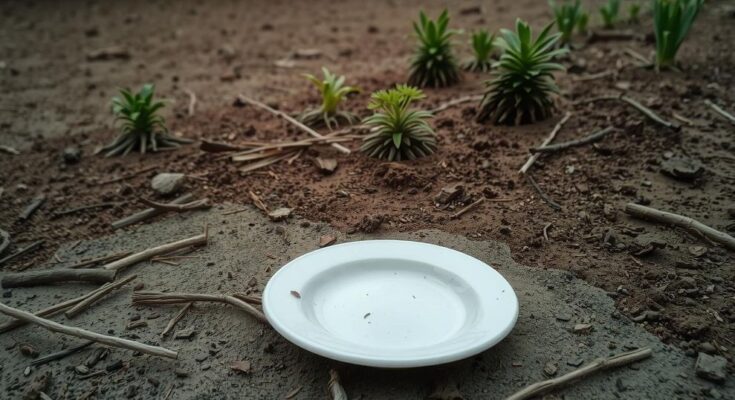Kenya faces a rising food insecurity crisis with 2.15 million people affected as of March 2024, up from one million in July 2024. Below-normal rainfall has contributed to significant food consumption gaps and malnutrition. The NDMA warns that this situation may worsen, potentially impacting up to 2.8 million people during the upcoming long rains season. While socio-economic inequalities persist, efforts are needed to ensure better food access, especially for vulnerable populations such as refugees.
The number of food insecure individuals in Kenya has reached 2.15 million, marking an increase from one million reported in July 2024, as stated by the National Drought Management Authority (NDMA). This worsening situation is predominantly due to below-average rainfall, which has reversed previous seasonal gains, resulting in significant food consumption gaps and increased malnutrition rates among households.
The NDMA anticipates that the food security crisis will worsen during the impending March to May long rains season, estimating that up to 2.8 million people may experience acute food insecurity. Recent reports highlight that the short rains of 2024 have performed poorly across all livelihood zones within the nation’s arid and semi-arid lands, further exacerbating the problem.
Declining availability of pasture and water has forced livestock to trek longer distances, adversely affecting productivity. There has been a notable 25-40 percent reduction in milk production, which in turn has led to increased milk prices particularly in the pastoral regions of northwestern Kenya.
The NDMA’s concerns follow findings from the Intergovernmental Authority on Development (IGAD), which indicated that Kenya, along with three other East African nations, is expected to face elevated heat wave conditions in the near future.
According to the United States’ World Food Programme, despite Kenya’s rapid transformation as a lower-middle-income economy, significant socio-economic inequalities remain prevalent. With over one-third of the population living below the poverty line, challenges such as rapid population growth, climate change, fluctuating food systems, and gender inequalities continue to threaten food security.
Access to nutritious food remains a critical challenge, particularly in the nation’s arid and semi-arid regions, which occupy 80 percent of the land. The arid climate renders Kenya’s primary agricultural sector vulnerable, as it relies heavily on seasonal rainfall.
Moreover, Kenya hosts around 500,000 refugees, mainly in remote counties where food insecurity is pronounced. These individuals, restricted in their movement and employment opportunities, rely heavily on international aid for sustenance.
The food insecurity crisis in Kenya has escalated significantly, affecting millions due to adverse climatic conditions and socio-economic challenges. The NDMA’s warnings of further deterioration highlight the urgent need for interventions to address food security and support affected populations, including refugees. As Kenya faces ongoing challenges with poverty and climate change, immediate action is crucial to safeguard food access for its citizens.
Original Source: www.socialnews.xyz




